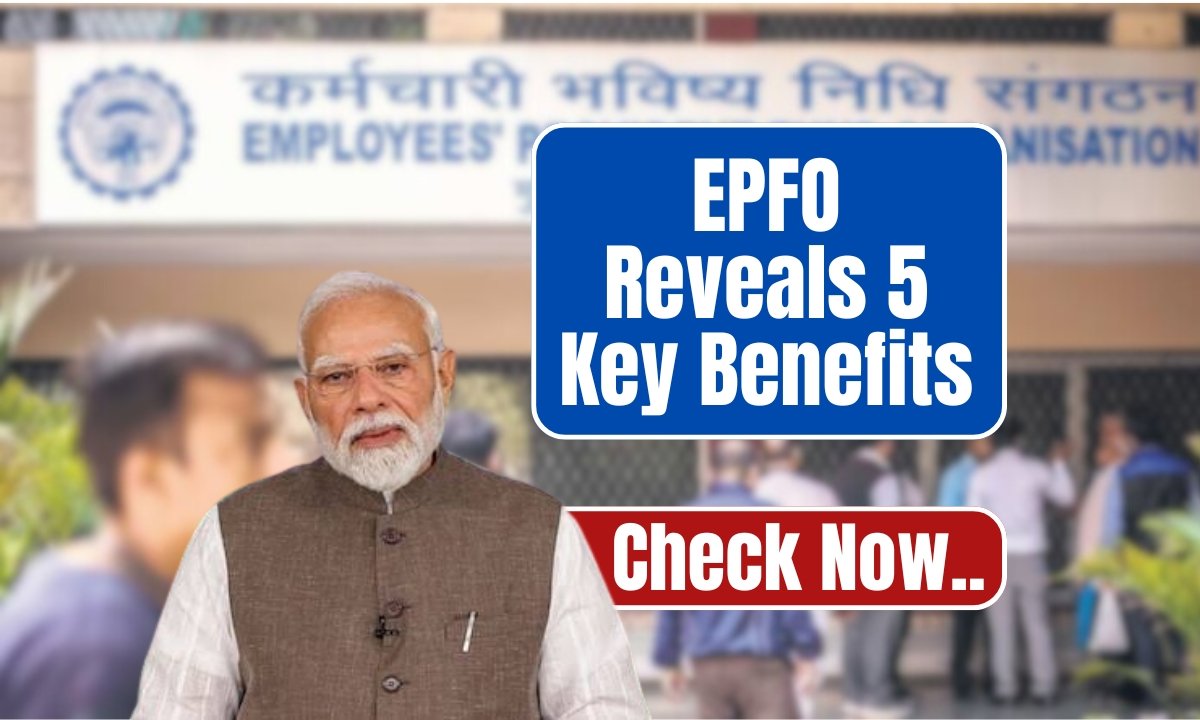The Employees’ Provident Fund Organisation administered PF accounts for about 320 million members, providing much more than retirement savings. With digital advancements such as EPFO 3.0, the scheme now offers financial security and flexibility something that few employees even bother to think about. This article sheds light on five little-known PF account-related benefits in 2025 to enable members to make the most of their savings.
High Returns Through Diversified Investments
EPFO invests PF contributions through a diversified portfolio offering an interest rate of 8.25% in 2025, far better than returns from any saving account. The portfolio is maintained with 5-15% exposure in ETFs, 45-50% in government bonds, 35-45% in debt instruments, and 5% in money market instruments. This ensures quite robust growth, with interest therefore credited annually, with compounding, thus creating a tremendous retirement nest egg over time. Consistently posted contributions take advantage of the high return, low-risk growth option, thereby letting PF serve as a tool for building wealth.
Pension Benefits Via EPS
Employees who have served for 10 years and have attained the age of 58 years are eligible for the Employees’ Pension Scheme, commonly referred to as EPS. A monthly pension is paid under the scheme for a period of the employee’s life depending upon the duration of his service and the average pay to provide some financial security after retirement. Recently, in 2025, a new rule is introduced to allow those who pay EPF contributions on wages above the wage ceiling of ₹15,000 to also have pension benefits in proportion to their contributions, thereby augmenting their retirement security. These benefits are often neglected but guarantee a life-long regular income for retirees.
Flexible Partial Withdrawals
PF accounts allow for partial withdrawals in times of some critical need with minimum procedural requirements, provided Aadhaar, PAN, and bank details are linked to the UAN. Members could withdraw 50 percent of their contributions for the purpose of marriage (their own, for their child, or for their sibling) or for education (higher education for children after Class 10) after seven years of membership and six months of salary for medical emergencies. The auto-settlement limit was increased from ₹50,000 to ₹5 lakh in the year 2025, and claims are settled within three to four days, facilitating quick financial relief.
Tax Benefits Under Section 80C
Contributions to PF accounts are entitled to deductions of up to ₹1.5 lakh under Section 80C of the Income Tax Act, while interest and maturity amounts are exempt from tax. Hence, tax deductions arise from the reduction of taxable income, whereas the investment appreciates between maturity and contributions, a very attractive proposition for any employee looking to strategically plan taxes. If one contributes regularly, the finance grows with the relief coming from two ends: investment growth and tax relief.
Seamless Digital Management With EPFO 3.0
Since June 2025, EPFO 3.0 commenced a raft of digital services, including ATM withdrawal, UPI transfer of up to ₹1 lakh, and a mobile application to allow balance enquiries and filing of claims. Members can even update certain details such as name or date of birth online, without requiring consent from their employer, provided their UAN is linked to Aadhaar, thereby saving a lot of paperwork. The Centralized Pension Payment System ensures pension payments are made directly through NPCI, greatly reducing delays. These enhancements have made EPFO more user-friendly and transparent for every member.
Also Read:EPFO Allows Easy PF Withdrawals: No Docs Required For Marriage, Education, Or Treatment
